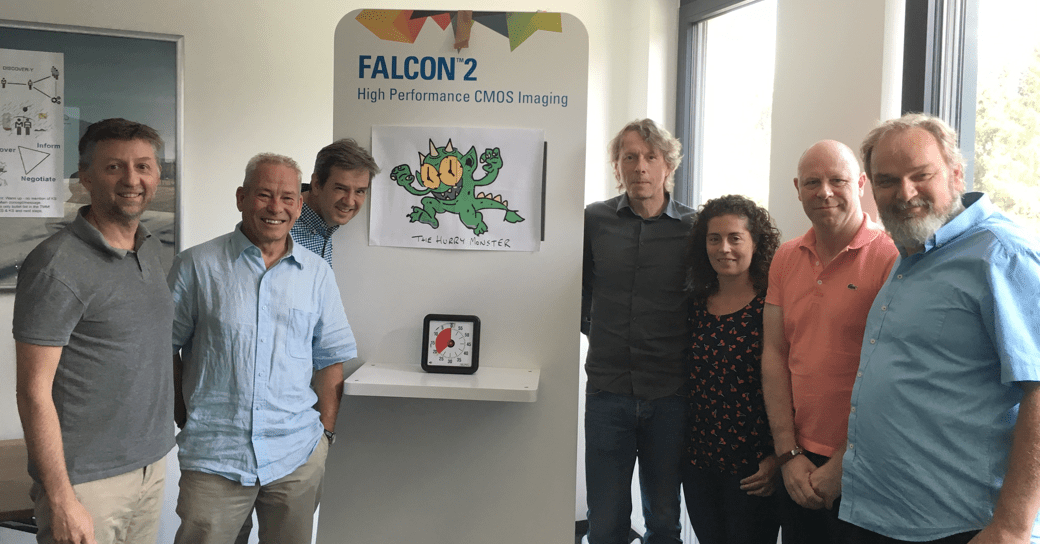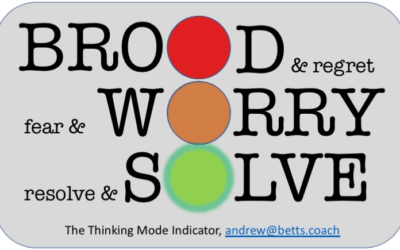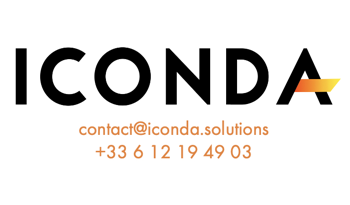The Hurry Monster (not to be confused with the Worry Monster – a cuddly toy – and the Panic Monster – a superb invention of Tim Urban’s) frightens us into rushing tasks that we would otherwise perform brilliantly. And he can have a disastrous effect on Customer Communication.
He’s looming in the background of the above group photo, taken after a training on Excellence in Customer Communication at Teledyne Dalsa in Krailling, Germany, last month.
Martin Grzymek’s, Teledyne Dalsa’s Director of European Sales, commented: “If a Technical Sales team hasn’t got time for customer communication training, then it probably needs some! Expertise and experience are not enough when the Hurry Monster comes along, as he always does. We need robust, shared tools in order to avoid mistakes. Rather than trying to work harder and faster, I want my team to become ever more efficient and effective!”
We use the monster image in training to reinforce the message that communication errors are generally not caused by ignorance or lack of necessary skills. They are usually the result of skipping simple steps in well-known communication processes.
These processes are often intuitive but, in order to work on them, we have to make them explicit. For example, I define an Encounter Process in five steps:
· Prepare: Plan the encounter (where the time spent on preparation is appropriate to the event, but never zero – see the post featuring the MAP tool)
· Engage: Sync up with a client and agree on how the meeting will be structured
· Do: The core of the encounter
· Check: Review what’s been covered, what’s left to do and that everyone is Ok, then agree on next steps
· Follow-Up: Carry out post-encounter actions
When the Hurry Monster causes one of these steps to be skipped, we have a Short Circuit. The only step that is hardly ever skipped completely is Do but, of course, we often see Short Circuits within the core of a meeting, as important subjects are rushed over.
The other four steps are just as vulnerable.
For example, suppose I go to meet a company executive and they have brought a couple of engineers along with them. If, in my hurry to get down to business, I don’t take the trouble to touch base with these unexpected attendees, then I have Short-Circuited a key part of the Engage step (technically called Inclusion). I should therefore not be surprised if they hit me with difficult, destructive questions later in the meeting.
The other classic Short Circuit in the Engage step is non-discussion of the meeting structure. Forgetting to check the time that participants have available is a particularly dangerous sin! We are reminded of this, too late, when key people start fiddling with their timepieces and, muttering excuses, make their escape.
Winding back, the Prepare step is perhaps the most Short-Circuited of all, frequently falling victim to Hurry Monster mania. That beast really doesn’t want me to think through My objectives, Audience and Plan before my next encounter!
I will Short Circuit a description of what can go wrong in the Check and Follow-Up steps, leaving this task to the reader’s imagination and experience.
In training we first work on awareness and observation of these and similar phenomena, then on rerunning real situations, in simulation, to explore how mistakes can be avoided.
If you are interested in this subject and others related to customer communication, please have a look at these short articles on the ICONDA website.






